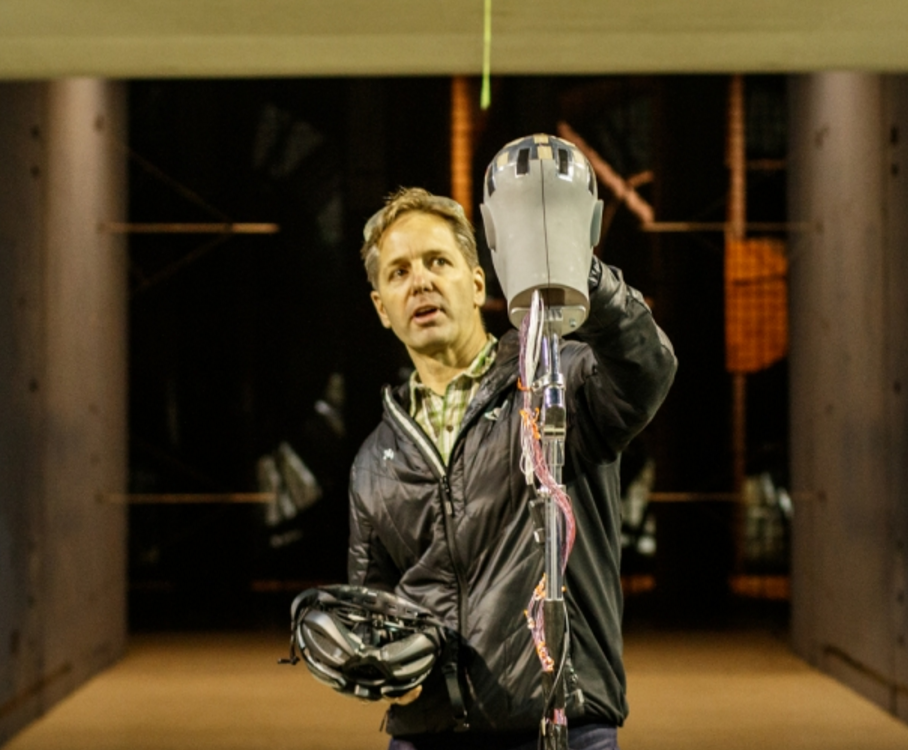On our last podcast, we talked to Ståle Møller, the co-founder and lead designer of Sweet Protection, about the critically important issue of head injuries, and how helmets can mitigate the risks we take outside. Today’s episode can be viewed as Part II of that conversation, and we focus a bit more on The Future and What’s Next?
To that end, we recruited the senior director of R&D at Giro, Rob Wesson, to further flesh out some of the fundamental issues surrounding head injuries, what sorts of new safety standards we can expect to see in the near future, and how helmet designs will evolve in the coming years.

Rob and I cover a lot of important ground in this conversation, and you will find a detailed breakdown of the topics and the specific times at which we cover them in the Show Notes below.
[powerpress]
Topics & Times:
• Rob’s background & what his work at Giro’s R&D Center involves (2:40)
• What most customers regard as the #1 factor when selecting a helmet (12:18)
• Which helmet type (road bike, mtn bike, ski, etc) is the most labor-intensive and most difficult to design? (14:40)
• Where are we headed in terms of helmet design? (18:14)
• Why MIPS matters, but why Giro wasn’t an early adopter (20:15)
• Thing you should know: What’s the Difference between “MIPS” and “Rotational Energy Management Systems” (22:38)
• Helmet Standards & Certifications: Who sets them & How does it all Work? (25:10)
• Rob sets the record straight on the term “Multi-Impact” (30:10)
• Why Rob doesn’t think I should start skiing in a hockey helmet (43:37)
• CTE: How does our growing understanding of head injuries in general — and CTE in particular — affect your work? (36:30)
• Why people who are against the use of helmets—and the evidence they tend to cite—are off base. (42:28)
• 4-5 years from now, what will be the biggest differences in the helmets from what is available today? (45:38)
• What is Giro doing different or better than other helmet companies out there? Why should someone buy a Giro helmet? (50:19)
• A dirty little secret about over 80% of the companies that sell helmets (52:35)
• What’s the real difference between a $60 helmet and a $250 helmet? (59:15)
• Why Giro is coming out with a $600 ski helmet, and why it was a huge project (1:02:22)
• How does Giro determine what sort of shape and fit their helmets will have? (1:04:40)

I hit a post and went OTB on my mountain bike and suffered a hard fall onto the road taking the impact on my left side. My expensive mips helmet was unmarked but I hit the ground with the left side of my face and my expensive photochromic mtb glasses with no bottom frame dug in above my eye and cut the skin to the bone.
I got 17 stitches and now 1 month later have nerve damage and loss of feeling in part of my forehead.
I never thought my glasses were a risk factor.
Would a different helmet have helped.
Is this a common injury?
Finally in the motorcycle industry there has been some headway in helmet design to protect the brain as opposed to primarily the skull. Protecting our skull has certainly pushed up the limits of speed and aggression increasing the impact of our brain inside the skull when there is an accident. CTE is scary. I avoided listening to this podcast because I’m still blowing bubbles from my last head injury and it’s tough to admit that this last concussion was the one that was too much. I still have the Giro helmet I was wearing that day only because it was returned as an incorrect address when I sent it for Giro to see the impact damage hoping it might be of some help to them. Look forward to seeing improvements in brain protection in the future.